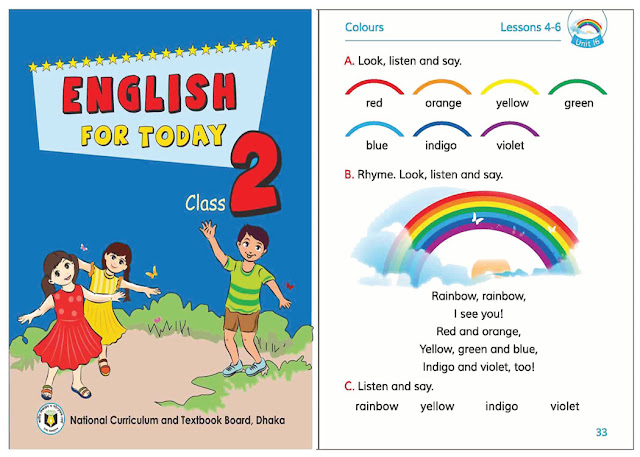This low resource
material is related to the textbook English
For Today of class two (Unit 16: Colours, Lesson: 4-6, Section: A). In Unit
16, lessons 4-6 are all about seven colours (red, orange, yellow, green, blue,
indigo, and violet) which are enlisted in the book to teach the students about
colours by presenting rainbow. The low resource material is related to the
lessons which will help the students to learn the names of different colours, and it will make the lesson easier to
learn.
In the classroom, the teacher will tell the students that they are
going to learn about the colours. Then, the teacher will show them the material
and teach them the names of seven colours. Moreover, the material will be
displayed in the classroom in two more places as the class size is large which
will help the students to see the material clearly. First, the teacher will say
the names of colours by mentioning the shapes from the material, and ask the students to repeat the names. Students will
orally practice the names of seven colours,
and they will become familiar with the colours by their names. Then, the teacher will ask the students to look at the
lesson on their textbook from where they will also learn the names of seven
colours. After that, the teacher will
mention one specific shape from the low resource material, and ask the students
to say the colour name of that shape. At the same time, the teacher will ask some students individually
about the colour names of the shapes, and they will be chosen randomly for the
questions. The teacher will also repeat
the colour name of the shape after student’s reply which will help the students
to understand the sound and exact colour of the shape.



Post a Comment